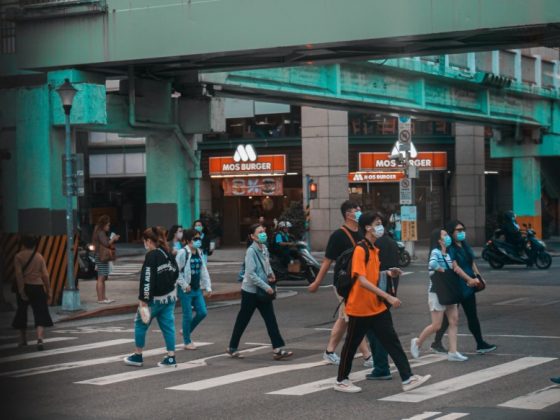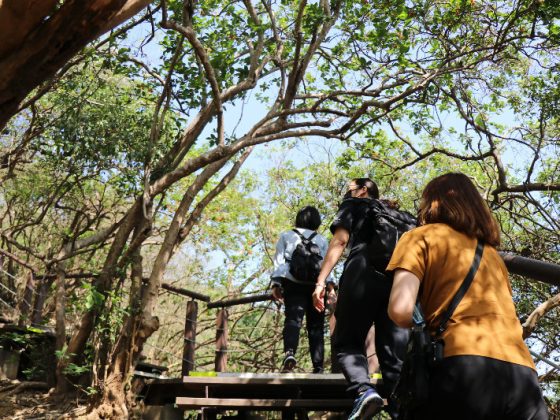Taipei is a dynamic metropolis where tradition and modernity live in harmonious integration. The city is home to a legion of large, bright, and colorful malls and high-street stores, and at the same time home to an almost countless number of proud old family-run shops that have deep roots in their local communities and reputations that reach across the city and, often, far beyond.
Inheritors of age-old wisdom and techniques, the generations that today run these enterprises devoutly carry on the traditions of their family seniors, with a passion and enthusiasm as warm as Taipei’s famously hot summer weather. In this article, we bring you on visits to four of the city’s most illustrious and cherished century-old shops. Each of these practices a different traditional trade. You’ll learn about their business philosophy, the techniques they utilize, and how they are adapting their business practices as the community and city change around them.
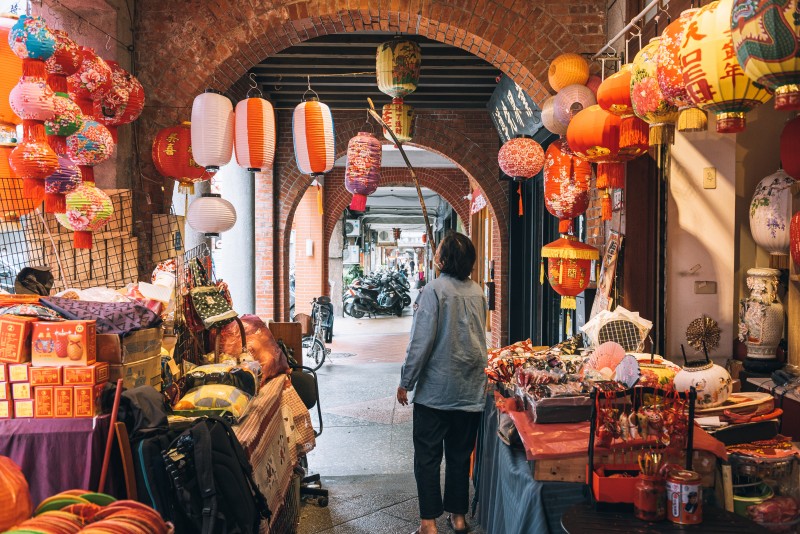
You’ll be getting to know a manufacturer of incense founded in 1897, a creator of decorative lanterns launched in 1915, a custom tailor of Western-style suits opened in 1916, and a maker of calligraphy brushes established in 1917. These visits will take you into three of Taipei’s oldest and most historic areas in the western part of the city. Among the areas, Wanhua (萬華) District was Taipei’s first place of Han Chinese settlement in the early 1700s, flourishing as a river port. The Dadaocheng (大稻埕) neighborhood took shape in the 1850s, and soon took over Wanhua’s role as key river port engaged in international trade. Last but not least, Bo’ai Special Zone (博愛特區) originally lay within the old walled city built in the 1880s, and houses several core governmental offices of the country and historical buildings.
Let’s head out to our first stop.
1. Lao Mian Cheng Lantern Shop 老綿成燈籠店
The Lao Mian Cheng Lantern Shop, standing at the north end of Dihua Street (迪化街), was founded in 1915. Lanterns of various colors and styles hang under the arched eaves of the old red brick house, adding a vigorous atmosphere to the retro neighborhood.
May May Chang (張美美), the third generation of the family who runs the business, and who has helped in the shop since childhood, shares with us that her grandfather began the business with the wholesale of sacramental joss paper, then shifted to lantern selling, which was also related to religious rituals, as temples usually light lanterns during festivals and celebrations to wish for good luck and symbolize brightness and peace.
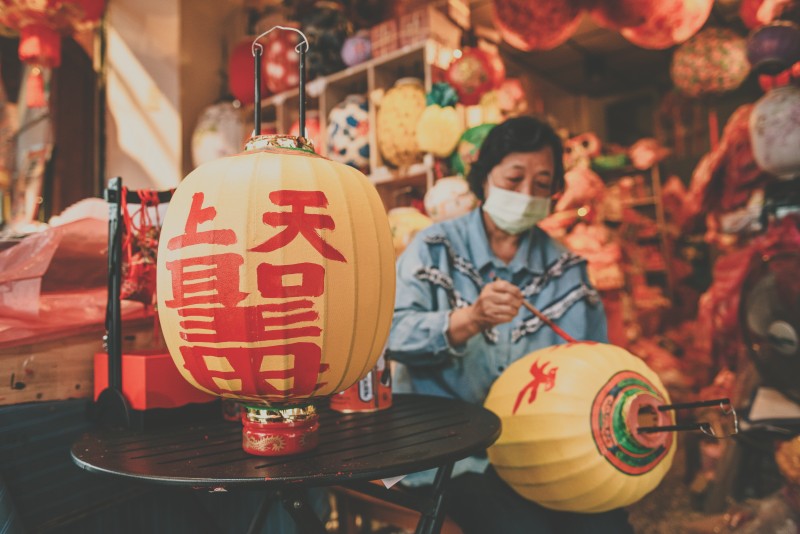
“I was born and raised here, and it used to be very bustling,” Chang says. The area at the end of Dihua Street used to be called Qiaotou Market (橋頭市場), which rivaled Yongle Market (永樂市場) at the beginning of the street. The streets were lined with vendors, and there were crowds of people every day.
She mentions that the painter Hsueh-hu Kuo’s (郭雪湖) work Festival on South Street (南街殷賑), which outlined the lively scene of Dadaocheng in 1930. “If you look closely at the details in the painting, you can also find traces of early lanterns,” Chang says, “This kind of early lantern is made of bamboo and woven by hand.”
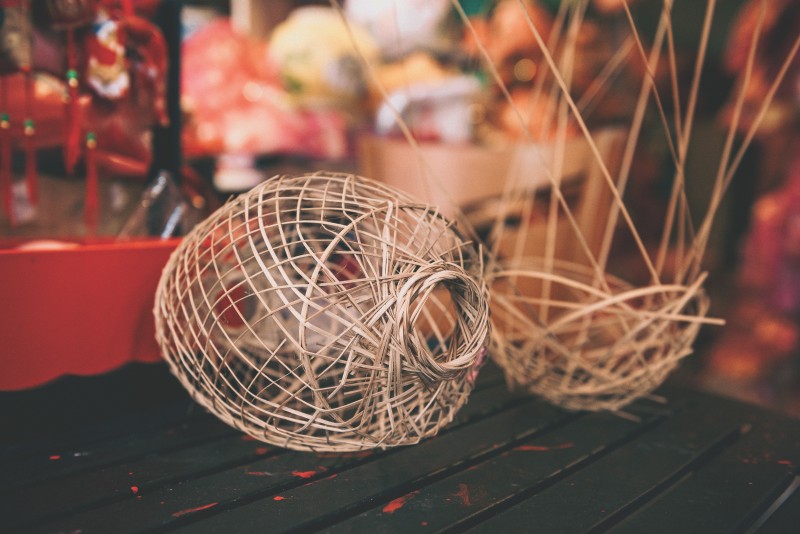
Lantern making seems intuitive, pasting paper or fabric on the concave lantern skeleton to prop up an ignitable hollow arc. As a matter of fact, all kinds of details are hidden. Hsin-yi Chang (張新怡), of the fourth generation of the family, explains that since the lanterns will be stretched out when they are unfolded, they are usually hung high, allowing people to look up from the bottom. Accordingly, special attention must be paid to proportion when drawing or writing the patterns or characters on the lanterns, so they can be shown evenly when unfolded. Hsin-yi also emphasizes the selection of bamboo. Only bamboo produced at a specific time has the tenacity and elasticity required to make lanterns. To make high-quality lanterns, Lao Mian Cheng makes no compromise on materials or techniques.
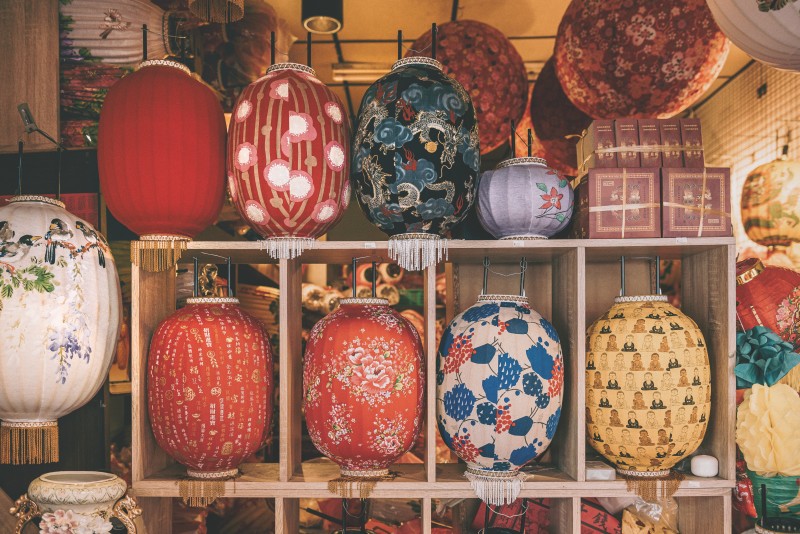
In addition to making lanterns for traditional temple rituals, Lao Mian Cheng is also constantly utilizing up-to-date painting and production methods in line with customer needs and marketing activities to create decorative lanterns in a variety of unique shapes, even exporting some lanterns abroad. The shop has previously cooperated with the Taipei City Government to light up the romantic atmosphere of Dadaocheng during the Lunar Valentine’s Day with a pastel macaron lantern tunnel. This year, they also joined hands with Taipei Xia-Hai City God Temple (台北霞海城隍廟) in Dadaocheng to design a golden lantern for the Taipei Xia-Hai City God Cultural Festival (台北霞海城隍文化節), during which partaking shops in the neighborhood would hang golden lanterns to greet participating visitors. (Read more: Summer Roaming with the Taipei City God)
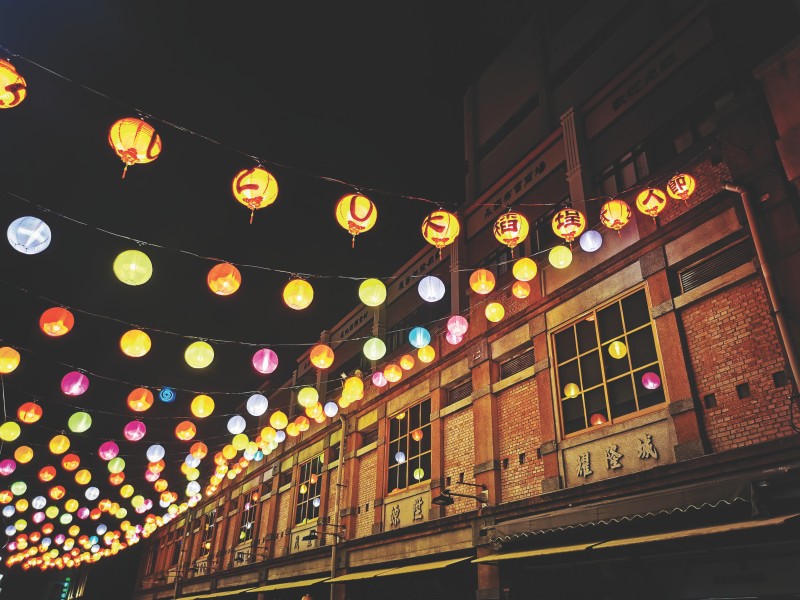
Hsin-yi, who is in charge of brand management, has been proactive in promoting the innovative application of lanterns lately. She has registered the brand logo on the blockchain and recently made a large lantern with the Heart Sutra written on it into a Non-Fungible Token (NFT). Moreover, through a Graphics Interchange Format (GIF), the lantern can even rotate smoothly with a 3D effect.
“Lao Mian Cheng has accumulated 107 years of technique and experience, step by step from paper lanterns to NFTs,” Hsin-yi says. The experience of four generations has allowed them to work with many different groups, making for many memorable and sparkling collaborations.
| LAO MIAN CHENG LANTERN SHOP |
| ADD 298, Sec. 1, Dihua St., Datong Dist. HOURS 9:30am – 7:30pm |
2. Lao Ming Yu Incense Shop 老明玉香舖
Lao Ming Yu, located on Guiyang Street (貴陽街) in Wanhua District, has a history of more than 120 years since its establishment in 1897, and is one of the only venerable incense shops in Taipei. The shop in the ancient red brick house sells all kinds of sacramental supplies, such as joss paper stamped with gold and silver foil and colorful paper lotuses. People in Taiwan burn these goods after worshiping the gods and their ancestors, with the belief that they would receive them as offerings in the next realm.
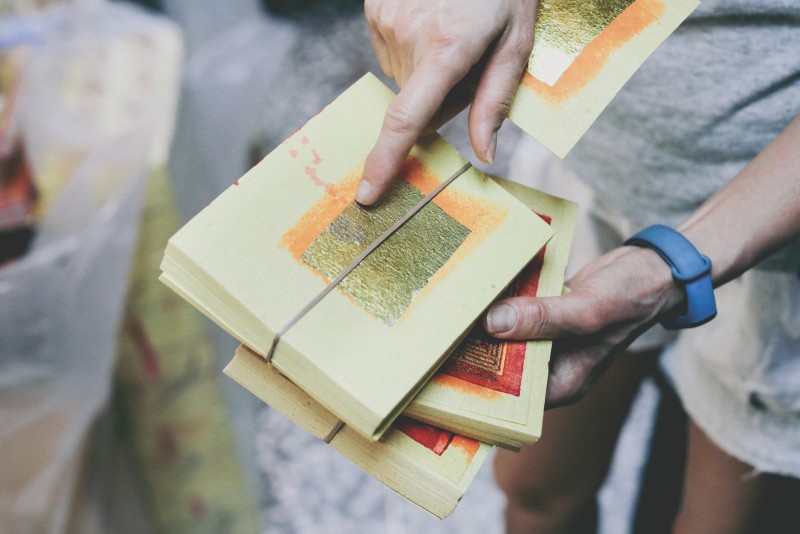
Walking into the store with the light aroma of traditional Han medicine, Chyong-yi Huang (黃瓊儀), the fourth generation currently in charge of the business, shows us a bunch of incense packed in a red box. As she introduces, “This logo has been used since my great-grandfather was in charge, and now we put his photo on it as a commemoration.” The pattern is said to have been hand-drawn by her great- grandfather, and it is still vivid after a hundred years.
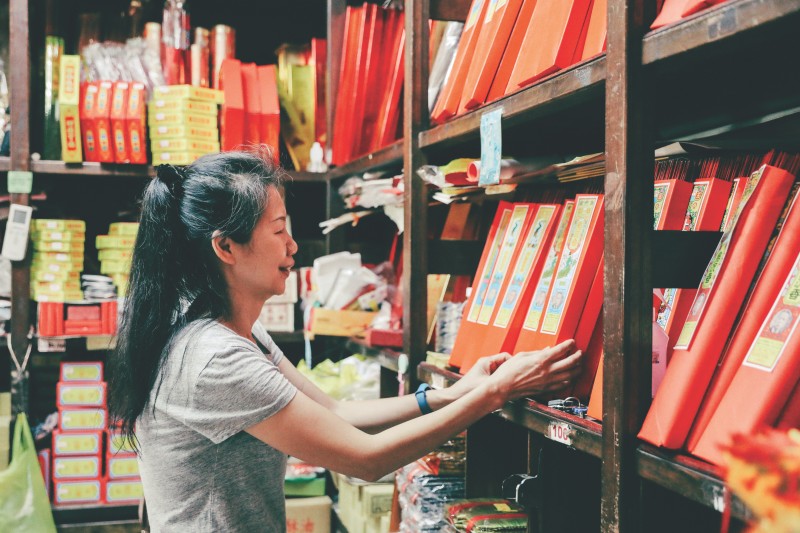
Lao Ming Yu began its business when Huang’s great- grandfather peddled around Taipei on foot with a shoulder pole. Hereafter, Lao Ming Yu relocated many times within the Wanhua area and eventually settled in the shop on Guiyang Street.
Growing up in the shop, Huang recalls that it was always crowded on Guiyang Street in the past. Pilgrims shuttled around the nearby Bangka Qingshui Temple (艋舺清水巖祖師廟), Bangka Qingshan Temple (艋舺青山宮), and Bangka Longshan Temple (艋舺龍山寺) to pay homage and purchased incense from the shop. Then the crowd went to the market to shop and dine. There were all kinds of food stalls gathered at the intersection, and the thoroughfare was once a famous breakfast street. “This used to be ‘The First Street of Taipei,’ which leads all the way to the estuary of the Tamsui River (淡水河). It was very bustling,” Huang says. (Read also: 8 Things to Do Around Longshan Temple)
Although the street is not as prosperous as it used to be, Lao Ming Yu is still the incense shop many natives of Taipei must visit during the Lunar New Year or other festivities. “Many customers say they can only find some traditional stuff here,” Huang points out. Lao Ming Yu’s products are made of scented powder ground and prepared from all-natural herbs and then kneaded with phoebe powder, with its natural viscosity. The exclusive formula has been passed down from the days of Huang’s great-grandfather. The gentle and calm aroma with a touch of warmth evokes comfort and relaxation.
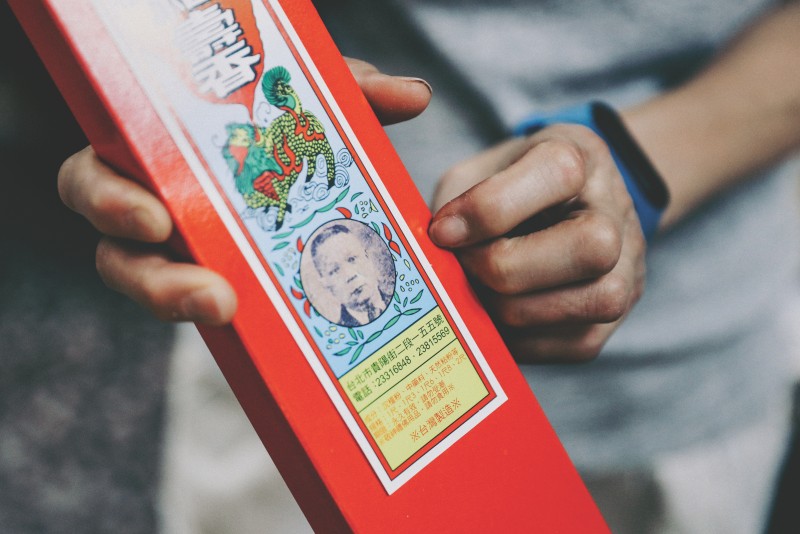
Facing the impact of changing times, the old incense shop did not desert its traditional techniques, but turned them toward various products. Apart from the traditional incense sticks, Lao Ming Yu has also made various incense sticks of varied shapes and usages, as well as coil incense and horizontal incense, according to contemporary needs. Even customers who do not burn incense to worship the gods and goddesses can find a use for traditional aromas in their daily lives. The century-old shop continues to respond to the customers’ needs and focus on making high-quality natural products. “We adopt fine materials and adhere to traditional practices, and people in need will continue to visit,” Huang says with pride.
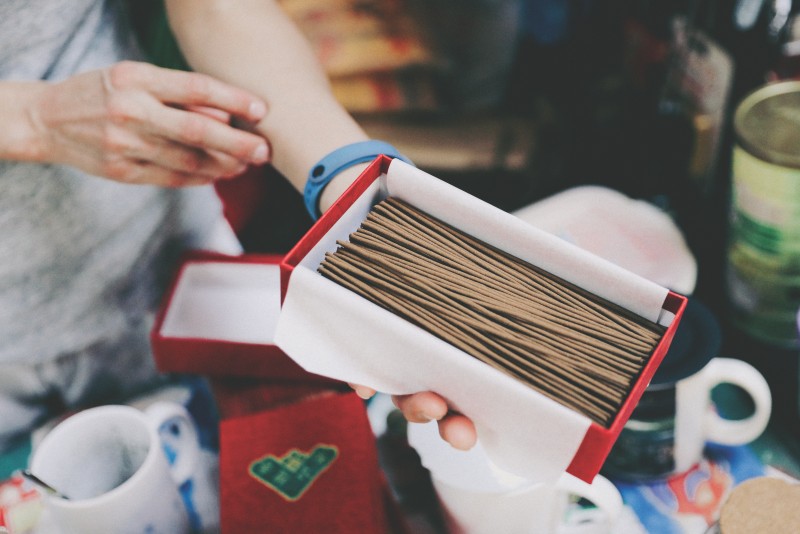
| LAO MING YU INCENSE SHOP |
| ADD 155, Sec. 2, Guiyang St., Wanhua Dist. HOURS 8:30am – 9:30pm |
3. Lam Sam Yick 林三益筆墨專家
Lam Sam Yick (林三益) is a traditional maker of calligraphy brushes located on the edge of Dadaocheng, one of Taipei’s three oldest and most historic communities, on busy, many-laned Chongqing North Road (重慶北路). Especially rich in heritage commercial architecture, Dadaocheng has long been northern Taiwan’s key wholesale/retail hub for traditional regional specialty goods, Chinese medicines, and floral fabrics. (You might also like: 15 suggestions for a day in Dadaocheng)
Though masters of tradition, this enterprise is now also known for its modern entrepreneurial dynamism, esteemed as a model for other old-brand family ventures looking for new revenue pathways. It pushed into a brave new world in 2008 with the introduction of LSY, a cosmetic brush brand.
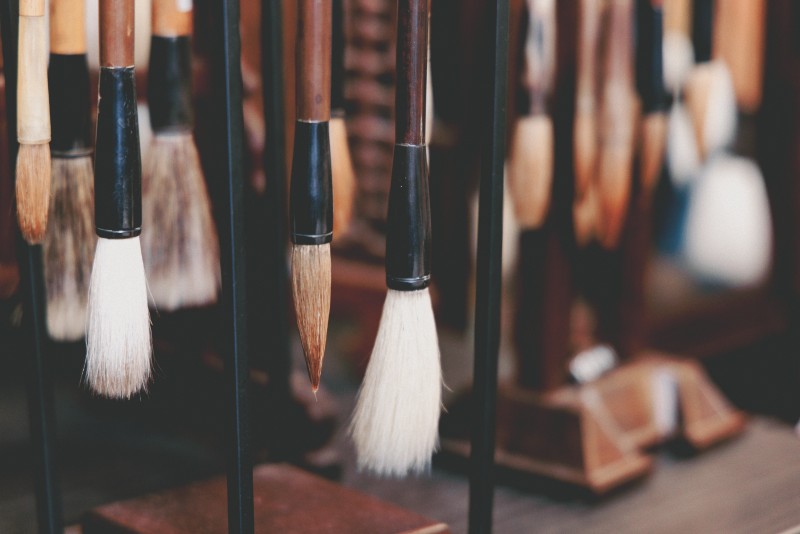
The enterprise was founded in Fuzhou (福州) in China’s Fujian Province (福建省) in 1917. The decision to shift to Taiwan was made in 1946 as China’s politico- economic situation rapidly deteriorated. Thereafter, the firm became the longtou (龍頭) or “dragon head” — i.e., unassailable leader — in calligraphy-related essentials throughout Taiwan.
However, says fourth-generation proprietor Chang- long Lin (林昌隆), as times changed the family faced new turbulence and a steady attack on sales — “The modern-day pen and keyboard ‘invasion.’ This became serious starting in the 1990s. Today, calligraphy is no longer taught in our elementary and secondary schools, and has become a recreational pursuit rather than a life necessity.” (Read more: More Than Calligraphy: Hsu Yung-Chin, a Calligrapher Combining Old and New)
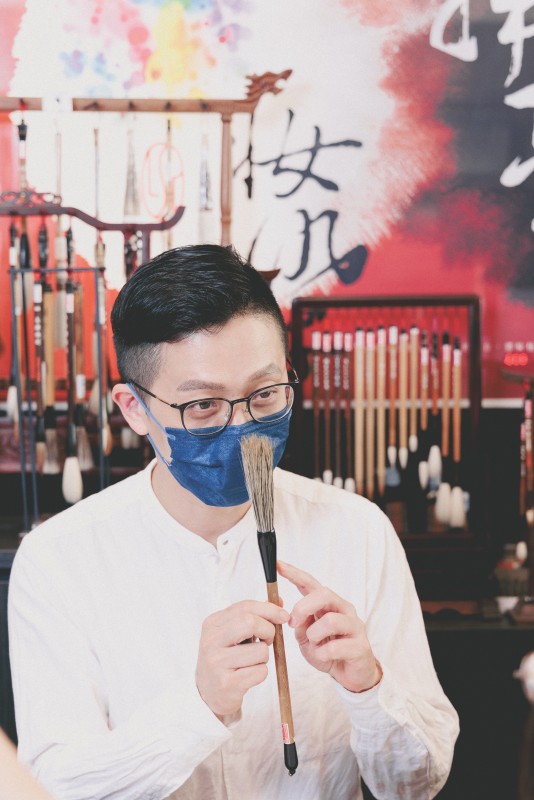
Seeking a new revenue pathway to augment Lam Sam Yick’s calligraphy brush sales, Lin decided that the best course was to build on the firm’s deep font of handcrafted brush expertise to create high-quality makeup brushes for women and facial-cleansing brushes for men. “In contrast to big brands competing in this sector, Lam Sam Yick remains nimble, and can provide both corporate and individual customers with custom-crafted designs.”
These upscale LSY items have been a stellar success, and are now sold in high-end retail outlets at major department stores. Lin states that each Lam Sam Yick calligraphy brush and LSY cosmetic brush is a unique handmade work of art with compellingly attractive lines, and that the company enjoys a steady stream of sales with overseas visitors looking for unique gift/ souvenir gems.
Lin further explains the Lam Sam Yick philosophy: “What the calligraphy brush does is to assist the user in pursuing ‘inner beauty.’ With LSY, we have extended our accumulated craft wisdom to help users pursue ‘external beauty’ as well.”
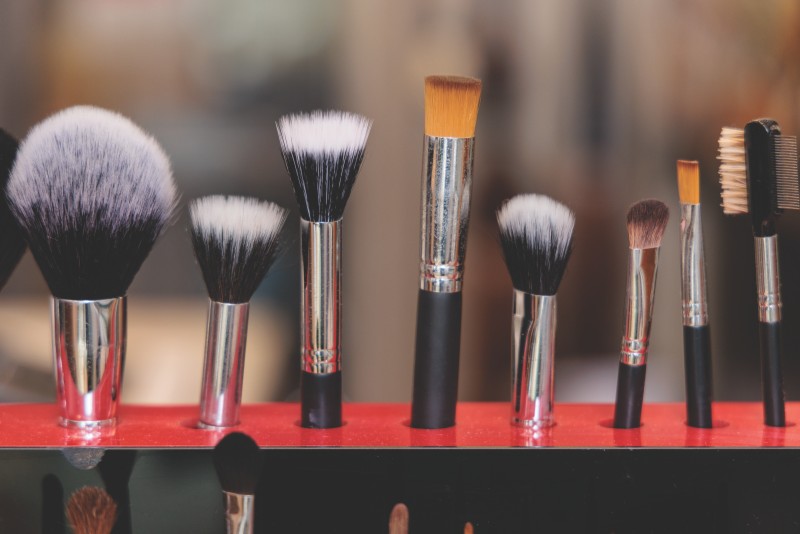
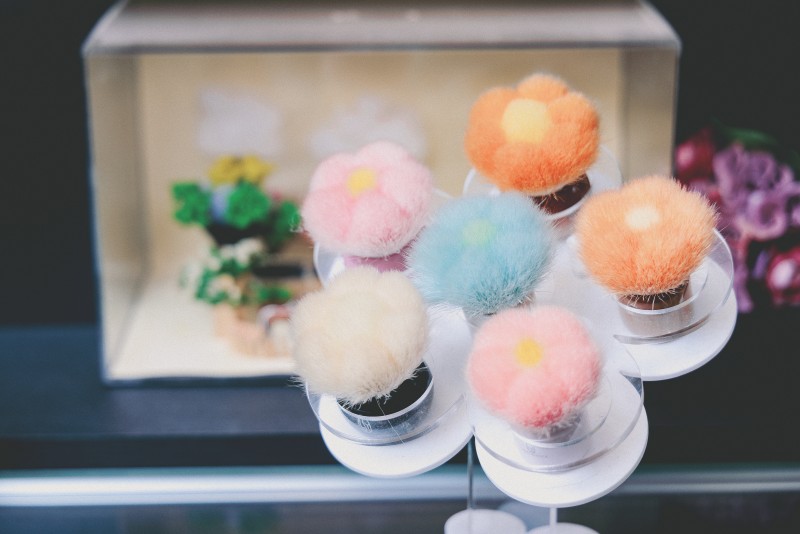
Beyond the master’s exacting skills in brush construction, Lin says, in their craft there is a second crucial element — hair selection. “What sets us apart is that we excel in both areas. Each brush, calligraphy or cosmetic is used for a specialized purpose, requiring hairs with specific hardness, softness, elasticity, suppleness, absorption, etc. Starting in my father’s time, we’ve experimented and scoured the East Asia region and beyond for the perfect purpose-specific hairs, with everything from sable to boar used.”
“However, with eco-consciousness rising, we’re also now using more synthetic hairs, while aware that plastics use has its own eco-issues. And responding to pandemic impacts, we’ve gone strongly online with calligraphy/cosmetic brush sales videos.”
| LAM SAM YICK |
| ADD 58, Sec. 2, Chongqing N. Rd., Datong Dist. HOURS 9:00am – 6:00pm |
4. Tom Tailor 湯姆西服
When it comes to the crafting of bespoke men’s suits in Taipei, there is perhaps no name more iconic than the century-old Tom Tailor (湯姆西服). An enterprise that shifted to Taipei from Shanghai, China in 1945, this custom-tailor shop has long been a maker of formal Western attire for big-name political figures and celebrities. It proudly proclaims that it is renowned as the “Designer Suit Shop for Successive Presidents.”
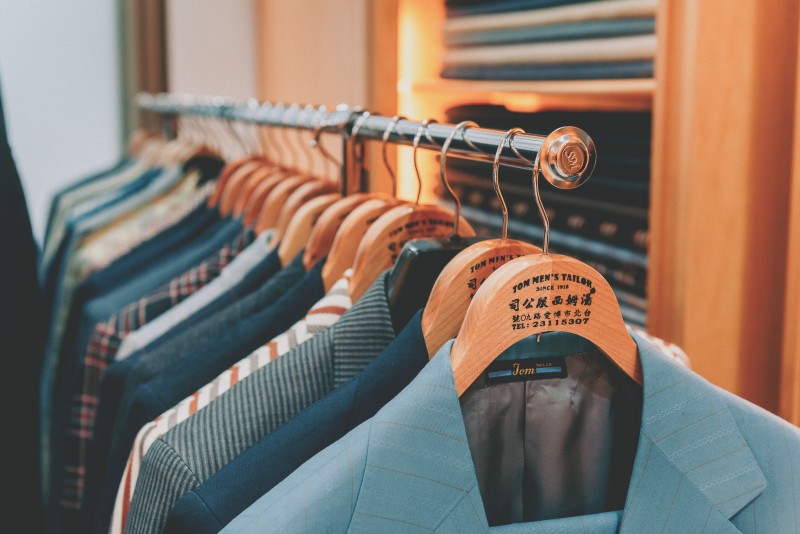
The firm is today run by Tom Hsu (許金地), the third generation of the family to take up the sewing needle and measurement tape. Tom Tailor opened in the French Concession of sophisticated Shanghai in 1916. According to Hsu, “Among our clients were the country’s most lofty notables. For example, we crafted the wedding outfits for Chiang Kai-shek (蔣介石) and Soong Mei-ling (宋美齡) for their grand 1927 wedding. Today these are on display at the Chiang Kai-shek Memorial Hall (中正紀念堂).” The firm’s master tailors were part of China’s renowned Red Gang (紅幫) group of tailors, originally making traditional Chinese formal attire, who became dominant in the creation of Western formal wear in Shanghai for both Chinese and Western clients. (Read also: 6 things to do in Taipei that should be on every visitor’s bucket list)
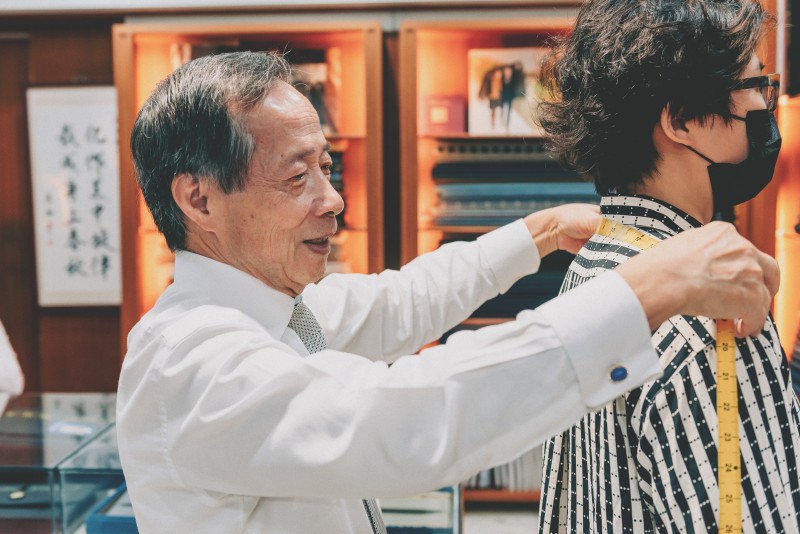
In 1945, in the face of increasing instability in China, the enterprise was moved to Taipei, in what is today known as the Bo’ai Special Zone, home to numerous important works of public heritage architecture, most notably the Presidential Office Building (總統府). “This was because, back then, this was one of Taipei’s busiest commercial areas,” says Hsu. “There was always activity, with businesses open well past midnight. Today things are quieter, and it is more a historical public/ commercial architecture district.” (Read more: 22 things to eat and do around Taiwan’s Presidential Office Building)
Hsu shares that by the very nature of his business, Tom Tailor has always simultaneously embraced tradition and modernity. “Our expert craftmanship skills are a direct Red Gang inheritance,” he says. “We use such unique and unmatched techniques, originally created for Chinese formal attire, and hundred paths craftsmanship process. Yet at the same time, we are constantly introducing novelty, for we must keep up with the latest trends in suits,” Hsu adds.
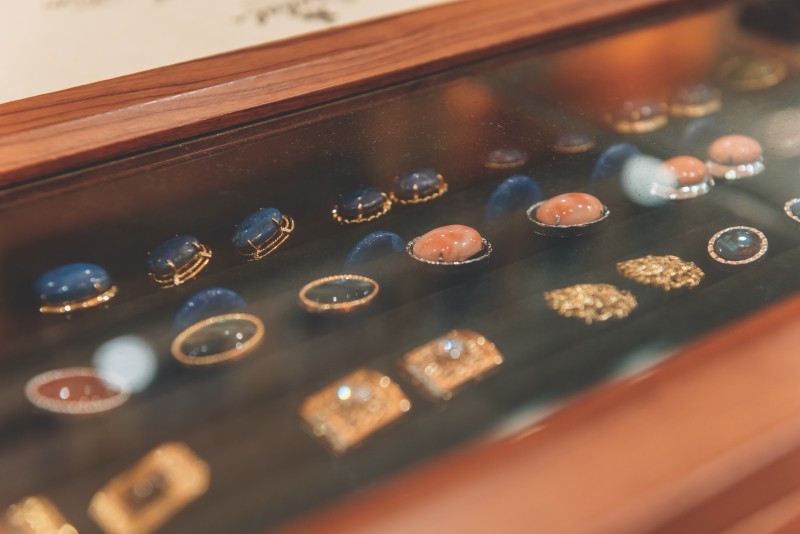
The firm has always prided itself on being able to provide customers with the latest suit fashions from regions around the globe, which means exacting knowledge of both changing styles and fabric trends. As well, with an eye to creating a loyal life-long clientele among young Taiwanese consumers, it constantly creates young and chic designs that catch the eye of new generations and are reasonably priced for the general public. “A great many of Taipei’s citizens have had their first suit tailor-made at Tom Tailor,” says Hsu. He also mentions that the introduction of new styling is being accelerated now that the fourth generation of the Hsu family, which “Exists in a dynamically different sartorial world,” is entering the family trade. (You might also like: Chic Indie-Design Children’s Apparel and Family-Fun in Taipei: Ángeles Studio & Shop)
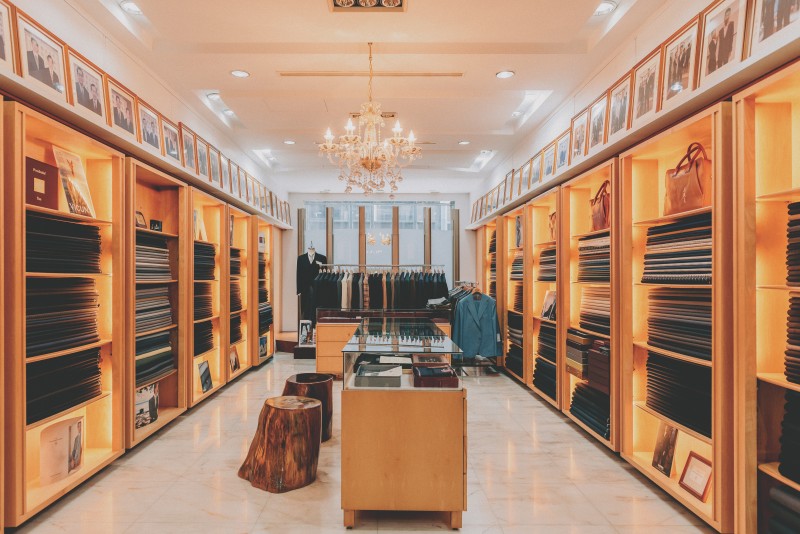
| TOM TAILOR |
| ADD 90, Bo’ai Rd., Zhongzheng Dist. HOURS 10:00am – 9:00pm |
Author Rick Charette and Elisa Cohen
Photographer Dinghan Zheng, Samil Kuo, Yenyi Lin, Department of Information and Tourism, Taipei City Government
This article is reproduced under the permission of TAIPEI. Original content can be found at the website of Taipei Travel Net (www.travel.taipei/en).


